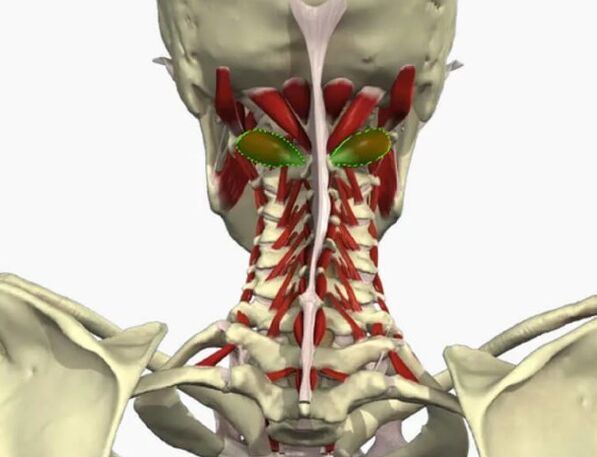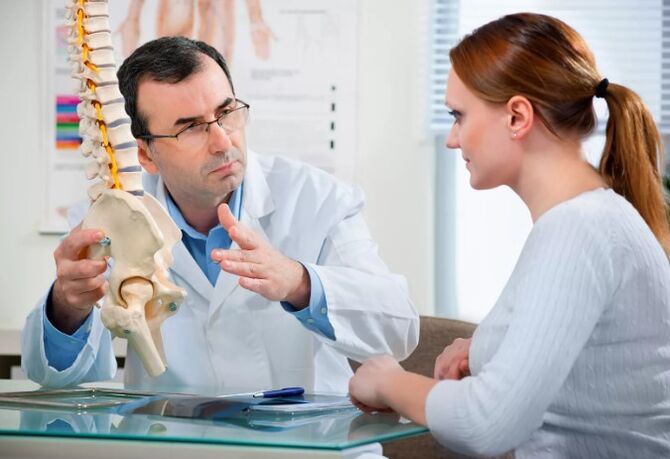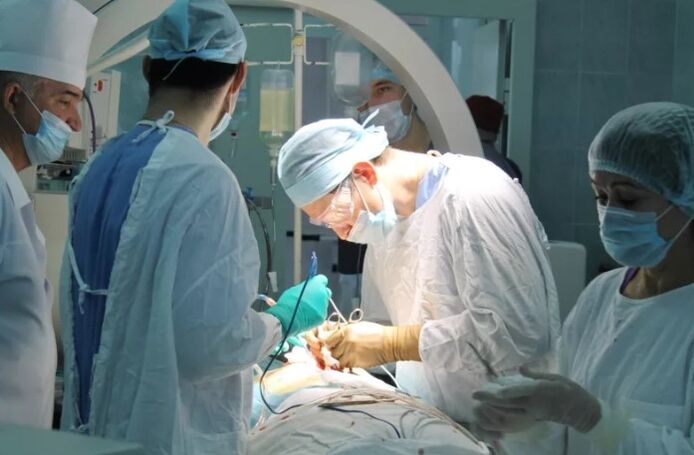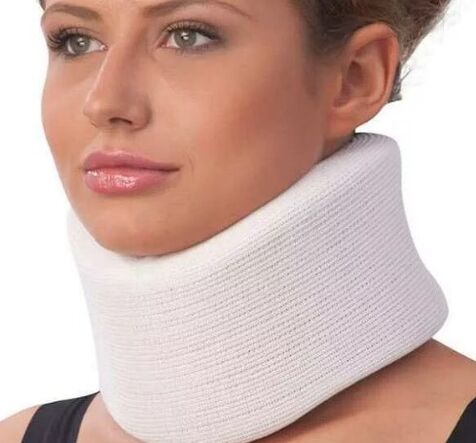Cervix osteochondrosis- This is a disease that is a process of nutritional violation or gradual destruction of the cartilage tissue of the intervertebral joints and cervical discs.
How to wear your head on your shoulders lightly?
If it is difficult to turn your head when your name is on the street, if your neck does not literally keep the word and only causes pain, then it's time to check the osteochondrosis.
The cervix is most prone to injuries, as it is the most mobilized, but has a weak muscle lining. The body creates heavy load on small mobile vertebrae. And the spinal canal itself is quite narrow. Easily squeezed with any pressure.
Thousands of people feel the severity in the back of the head or tingle in their hands. And without suspecting the danger, such physiological manifestations are called fatigue and nearby cold. Many blood vessels and nerve endings are concentrated on the neck. In the case of osteochondrosis, the spine artery is stroked, which provides nutrition in the nutrition of the cerebellum, oblong brain and the back of the brain. As a result, one fails to coordinate movements, loss of equilibrium, falling, hearing, and this phenomenon sometimes leads to stroke.
Fact. According to WHO statistics, people aged 30-40 are suffering from cervical osteocondrosis. Doctors explain this trend with a mass decrease in physical activity. And the prevalence of this disease in industrialized countries is 60-80%.
Syndrome and symptoms of osteochondrosis
- Stenosis (the spinal canal narrowing syndrome): Construction of intervertebral discs, osteophytes (bone tissue growth), or austerity of the spinal cord (bone tissue increase) or the compressed spinal ligament. As a result, it is disturbed by blood circulation in the affected area. One feels limited and feels noticeable pain in the cervical spine. There are numbness and tingling in the upper and lower limbs
- Coordinated syndrome: Press the intertebral nerve roots. This leads to headaches in painful, burning or pulsating impulses, sometimes the feelings are similar to the symptoms of hypertension. In this syndrome, speech defects and damaged fragrance, hypertrophy of facial muscles, linguistic sensitivity, and a feeling of "clogging" of the throat with lumps. Breathing becomes interrupted, one person suffers from snoring, often unreasonably seeming to "put down" his nose.
- Vail artery syndrome: It is formed during the compression of the spinal artery. The main satellite is pulsating pain. Attacks can grasp the parietal stake, the eyebrow area, the temporal and the occlital shares.
- Cardial syndrome:This is similar to an angina pectoris attack, but their duration is much greater. The pain is reflected in the membrane. In some people, this phenomenon is accompanied by increased blood pressure and arrhythmia.

The main causes of the development of the disease
- Metabolism defect errors;
- Lifestyle with low motor activity;
- Hereditary predisposition;
- Age -related ossification;
- Handcuffs in the muscles that result in a change in posture;
- Lack of fluid and vitamins in the daily diet;
- A long stay in an unpleasant position that increases pressure on plates and spine;
- Overweight or overload to the spine due to a heel;
- All kinds of transferred spine injury;
- Regular weight lifting;
- Autoimmune diseases (process of self -destruction of the immune system) leading to degeneration of cartilage tissue;
- Stress leading to muscle cramps and violation of the bloodstream of the vertebrae;
- Hypothermia.
Diagnosis of the cervix osteochondrosis
The initial diagnosis of the "cervix-toracic class" or only the initial diagnosis of the cervix department may make the doctor a doctor during the patient's initial examination. The expert defines:
- A person's physical type;
- Posture;
- Spinous process line;
- The cervix lateral contours and blades are located;
- Localization of pain points and levels of pain;
- Amplitude of the elasticity of the spine
- Muscle light.

All this tells how the disease flows. In addition, the doctor will send you a number of exams:
- Digital radiography;
- CT (computer tomography);
- MRI (magnetic resonance imaging);
- Ultrasound dopplerography of the main arteries of the brain: a special ultrasonic sensor determines the state of blood flow and the walls of the blood vessels.
Methodology of treating osteochondrosis of the cervical spine
The doctor will help you choose the optimal solution of the problem. And offers various treatment methods: medication in combination with physiotherapy or prescribes an operation that saves your body.
Conservative treatment- This is first and foremost medication. It relieves pain, relieves muscle tension and extinguishes inflammation. For these purposes, non -steroid anti -inflammatory drugs (NSAIDS) and analgesics are prescribed. Condroproprotectors also fall into the recipe list to activate the healing process in the cartilage tissue of the joint, as well as Group B vitamins and external drugs: gels and ointments containing NSAIDs.
Physiotherapy, however, the nutrient food of the vertebral disc has been saturated and contributes to the regeneration of the cartilage. The physician also prescribes the therapy gymnastics exercises to strengthen muscle lining and develop the elasticity of the Ligament. You can lead an introductory lesson to perform the exercises properly.
SurgeryIt is appropriate if the drug and physical effects cannot be alienated. If the patient has a narrow spinal canal. Operational intervention is called the anterior cervix Discoctomy. The surgeon immobilizes the affected spine segment and removes the intervertebral hernia clamping on the spine. Over time, the vertebrae between which the disc was removed. This is called spondylodesis. For others, a specialist can carry out an operation in stabilizing the cage - that is, the space between the vertebrae is full of an artificial insert.
After 3-5 days, the operator is prescribed from the hospital for outpatient treatment. Rehabilitation is approx. It takes 3 months and depends on the patient's proven implant and professional activity.
What is the best way to create a human lifestyle by diagnosing cervical osteochondrosis?
Daily routine must contain mandatory walks while jumping and running are better avoided. For a long time, it is contraindicated to spend time in a sedentary position, swimming is useful - it not only strengthens muscle tone, but also relieves body restrictions. In the evening, there will be no unnecessary hot shower (except for the treatment period of the cervix during the aggravation of the disease). It is important to follow your diet. Use products saturated with magnesium and calcium - nuts, dairy products and seafood, legumes. We have to leave alcohol.
Is it possible to visit the sauna during the aggravation of osteochondrosis?
Usually heating is beneficial to the patient, but after increased praise, you need to deny the immersion in cold water. You can't run out of frost. Otherwise, the disease is worsening. Cervical osteochondrosis is sensitive to all temperature differences, including climate. For example, autumn cooling can negatively affect a person's well.
What complications can occur after the cervical region osteochondrosis?

If, over time, when the first signs of the disease appear, we do not start the treatment process, the neck may stop literally interpreting the word. And the complications of this disease are quite serious. There is a risk of protrusion - the "protrusion" of the intervertebral disk outside the spine that can later obtain the shape of the hernia. Cervical nerve roots can be injured. Or osteophytes (bone growth of the vertebrae) appear. Words often weaken the muscles or paresis - a condition where the head hangs to the side or forward. In this class, the blood -nourishing spine arteries in the processes of cervical germs. Violation of blood circulation is one of the most serious phenomena. Without handling willingness can lead to neuralgia, deaf and even loss of vision. But even if you deal with the issue at an early stage of development, the disease can be prevented.
Why do you need a Chantsis collar?
It is an orthopedic latch made of elastic material used to treat neck osteochondrosis to immobilize the neck. But it is impossible to wear such a tool for a long time, as the muscles may weaken over time and will be used to throwing the head into the side without further support. Chansa reinforcement does not allow the vertebrae to shift and preserve the corrective effect after the massage content. It takes over the weight of the head and distributes it equally with the collar bone and the bottom of the neck. At the same time, the head remains in the right position.


























